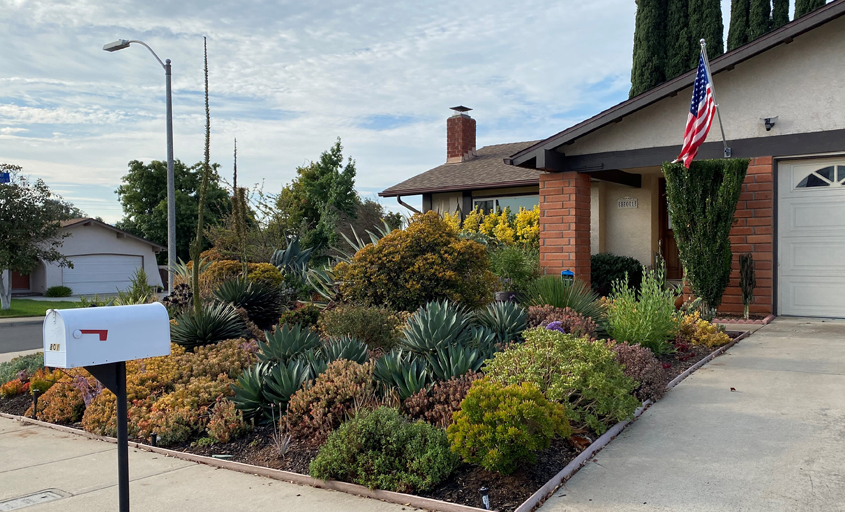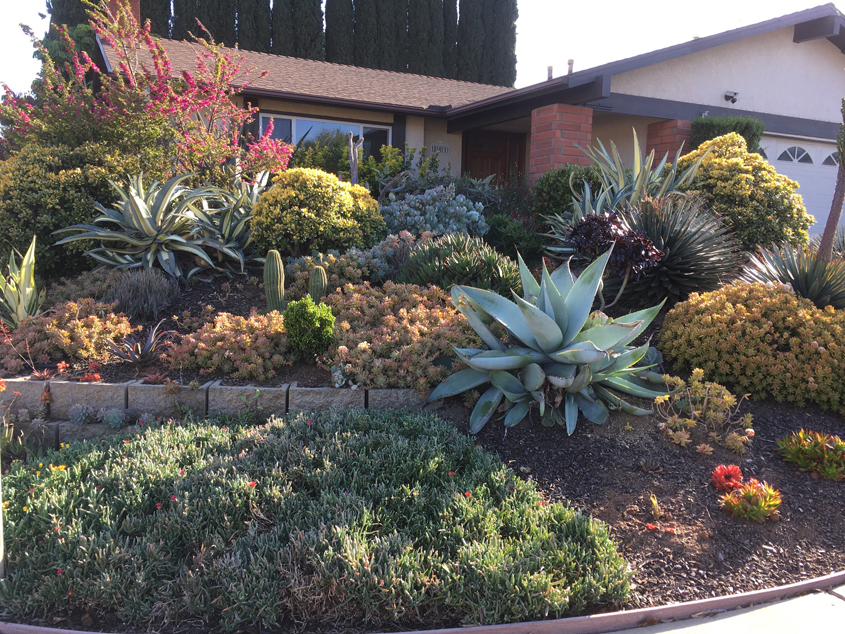A lush native garden low on water use but not on style won first place in the City of Escondido’s 2020 WaterSmart Landscape Contest.
To encourage customers to reduce outdoor water use, the City of Escondido recognizes its customers whose yards best exhibit the beauty of California-friendly, low-water gardening in the annual competition.

The Brants’ landscaping before its award-winning waterwise landscaping makeover. Photo: City of Escondido
Winners Todd and Susie Brant said when they moved to Escondido and experienced its hot, dry weather, they began to reconsider whether they wanted to waste water resources watering a thirsty front lawn. They took advantage of the San Diego County Water Authority’s landscape makeover classes, then learned about the Turf Replacement Program, which could help cover the costs of removing their lawn and replacing it.

The Brants selected plants they loved and “found a place” for them. Photo: City of Escondido
“We followed all the instructions carefully and were able to get the entire project paid for from the plants to the labor, and even some help from a landscape design professional,” said the Brants.
A little bit of everything

Waterwise plant choices don’t have to be boring. Photo: City of Escondido
The transformation is dramatic from a featureless patch of lawn to a palette bursting with agaves, succulents, sage, bird of paradise, dwarf bougainvillea, and more.
“As you’ll see in the photos, we have a little bit of everything!” said Susie Brant. “We just wander around the nursery, and if we like a plant, we’ll take one home and find a place for it.”
The Brants also retrofitted their irrigation system’s sprinkler heads with new ones that use much less water.
Virtual landscape makeover classes

The Brants took advantage of the San Diego County Water Authority’s landscape makeover classes to help them plan their project. Photo: City of Escondido
The Water Authority’s WaterSmart Landscaping Makeover classes are now available online. The next class is scheduled for September 12. The free, three-hour workshops teach the basics of how to do a landscape makeover. Each workshop covers topics different topics. Topics include soil, design, turf removal, plant selection, planning, irrigation, rainwater catchment, and implementation — all the elements needed to convert high-water-use turf to a beautiful, water-efficient landscape.
All weekday workshops are held from 5:30 p.m. to 8:30 p.m. and Saturday workshops from 9 a.m. to Noon. Workshops are free, but participants must register in advance at WaterSmartSD. Courses are also scheduled for October and November.







